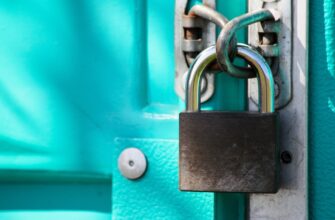- What Is a Private Key and Why Is Securing It Critical?
- Common Risks of Poor Private Key Management
- Proven Methods to Secure Private Keys Safely
- What to Avoid When Handling Private Keys
- FAQs: Private Key Security Demystified
- Can hackers steal a private key from a hardware wallet?
- Is paper wallet backup safe?
- Should I use a password manager for my private key?
- What if I lose my private key?
- Are biometrics (e.g., fingerprint) safe for key protection?
- Conclusion: Security Is Achievable With Diligence
What Is a Private Key and Why Is Securing It Critical?
A private key is a cryptographic code that grants exclusive access to your digital assets—like cryptocurrencies, encrypted files, or secure communications. Think of it as the ultimate digital signature: whoever controls it owns what it protects. Securing it isn’t just advisable; it’s non-negotiable. A compromised key can lead to irreversible theft, data breaches, or permanent loss of funds. With cyberattacks growing more sophisticated, understanding how to safeguard this key determines your digital safety.
Common Risks of Poor Private Key Management
Failing to secure private keys properly invites catastrophic consequences:
- Theft: Hackers use malware, phishing, or brute-force attacks to steal keys stored on vulnerable devices.
- Loss: Accidental deletion, hardware failure, or forgotten passwords can permanently lock you out of assets.
- Human Error: Sharing keys via unencrypted messages or storing them in easily accessible locations (e.g., cloud notes).
- Physical Compromise: Paper backups destroyed by fire, water, or theft.
High-profile breaches—like the $600 million Poly Network hack—often trace back to exposed private keys.
Proven Methods to Secure Private Keys Safely
Yes, it’s absolutely safe to secure a private key—if you follow rigorous protocols. These methods balance accessibility and impenetrability:
- Hardware Wallets: Devices like Ledger or Trezor store keys offline, immune to online threats. They require physical confirmation for transactions.
- Cold Storage: Keep keys entirely offline via encrypted USB drives or paper wallets stored in fireproof safes.
- Multi-Signature Wallets: Require 2-3 separate keys to authorize transactions, reducing single-point failure risks.
- Sharded Backups: Split your key using Shamir’s Secret Sharing (SSS), storing fragments in geographically separate locations.
- Air-Gapped Devices: Use a dedicated, offline computer for key generation and storage, never connected to the internet.
What to Avoid When Handling Private Keys
Never compromise security for convenience:
- ✗ Storing keys on internet-connected devices (phones, laptops).
- ✗ Using unencrypted digital backups (e.g., email, cloud drives).
- ✗ Sharing keys via messaging apps or screenshots.
- ✗ Relying solely on memorization—human memory is fallible.
FAQs: Private Key Security Demystified
Can hackers steal a private key from a hardware wallet?
Extremely unlikely. Hardware wallets keep keys in a secure chip isolated from your computer/phone. Transactions require manual device confirmation, blocking remote attacks.
Is paper wallet backup safe?
Yes—if done correctly. Print keys on durable, non-bleeding paper, laminate it, and store it in a waterproof/fireproof safe. Avoid digital scans.
Should I use a password manager for my private key?
Not recommended. While convenient, password managers are online targets. Opt for offline storage unless the manager supports end-to-end encryption and air-gapped backups.
What if I lose my private key?
Without a backup, recovery is impossible. Always maintain 2-3 encrypted backups in separate physical locations. Test restoration periodically.
Are biometrics (e.g., fingerprint) safe for key protection?
Biometrics add a layer of security but shouldn’t replace your key. Use them as a secondary lock (e.g., to unlock a hardware wallet), not as the key itself.
Conclusion: Security Is Achievable With Diligence
Securing a private key safely is not only possible but essential. By combining hardware solutions, offline backups, and disciplined practices, you create a fortress around your digital assets. Remember: your key’s safety reflects the effort you invest. Start implementing these strategies today—your digital future depends on it.








